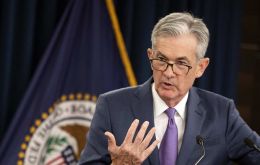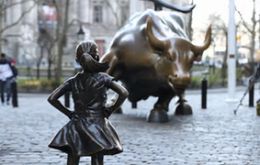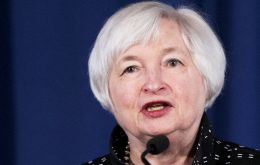MercoPress. South Atlantic News Agency
Tag: Fed interest rate
-
Thursday, December 15th 2022 - 11:47 UTC
Fed raises interest rates by 50 points to 4,5%, but US inflation at 7,11% is still far from the 2% target

In a unanimous decision the United States Federal Reserve FOMC raised interest rates by half a percentage point on Wednesday, as it continues to battle a stubborn inflation, but the increase was lower than the three-quarter point which it had implemented seven times since last March, from zero to 4,5%.
-
Thursday, December 13th 2018 - 08:49 UTC
US consumer prices in November unchanged, with sharp decline for gasoline

The United States consumer prices were unchanged in November, held back by a sharp decline in the price of gasoline, but underlying inflation pressures remained firm amid rising rents and healthcare costs. The strength in underlying inflation reported by the Labor Department on Wednesday supports views that the Federal Reserve will raise interest rates at its Dec. 18-19 policy meeting. The U.S. central bank has hiked rates three times this year.
-
Friday, November 9th 2018 - 08:45 UTC
Federal Reserve leaves rate unchanged but December hike is expected

The Federal Reserve has left its key policy rate unchanged but signaled that it plans to keep responding to the strong U.S. economy with more interest rate hikes. The next rate increase is expected in December.
-
Thursday, February 22nd 2018 - 09:07 UTC
Fed more positive on economic outlook ...and more rate hikes expected in 2018

United States Federal Reserve officials grew more positive on the economic outlook, citing “substantial underlying economic momentum,” and were increasingly optimistic about achieving their inflation target, according to minutes of last month’s policy meeting.
-
Monday, March 13th 2017 - 14:40 UTC
Federal Reserve expected to raise interest rate on Wednesday

Robust hiring by United States employers in President Donald Trump's first full month in power, along with rising wages, have economists tipping a faster-than-anticipated cycle of interest rate increases by the US Federal Reserve, beginning this week.
-
Saturday, December 5th 2015 - 06:42 UTC
Positive US jobs data paves the way for the Fed to raise interest rates

US jobs growth remained solid in November as the economy added 211,000 jobs, slightly above expectations. The data, from the Bureau of Labor Statistics, also showed the jobless rate held at its seven-and-a-half year low of 5%. Construction, food services and retail sectors all saw healthy job increases.
-
Friday, September 11th 2015 - 10:34 UTC
Fed's rate decision next week: conflicting positions between US voters and EM central bankers

As the Federal Reserve gets ready to debate its interest rate policy stance next week, a poll released Thursday finds a strong majority of US voters surveyed want central bankers to refrain from boosting short-term interest rates, and to instead concentrate on using monetary policy to further boost the job market.
